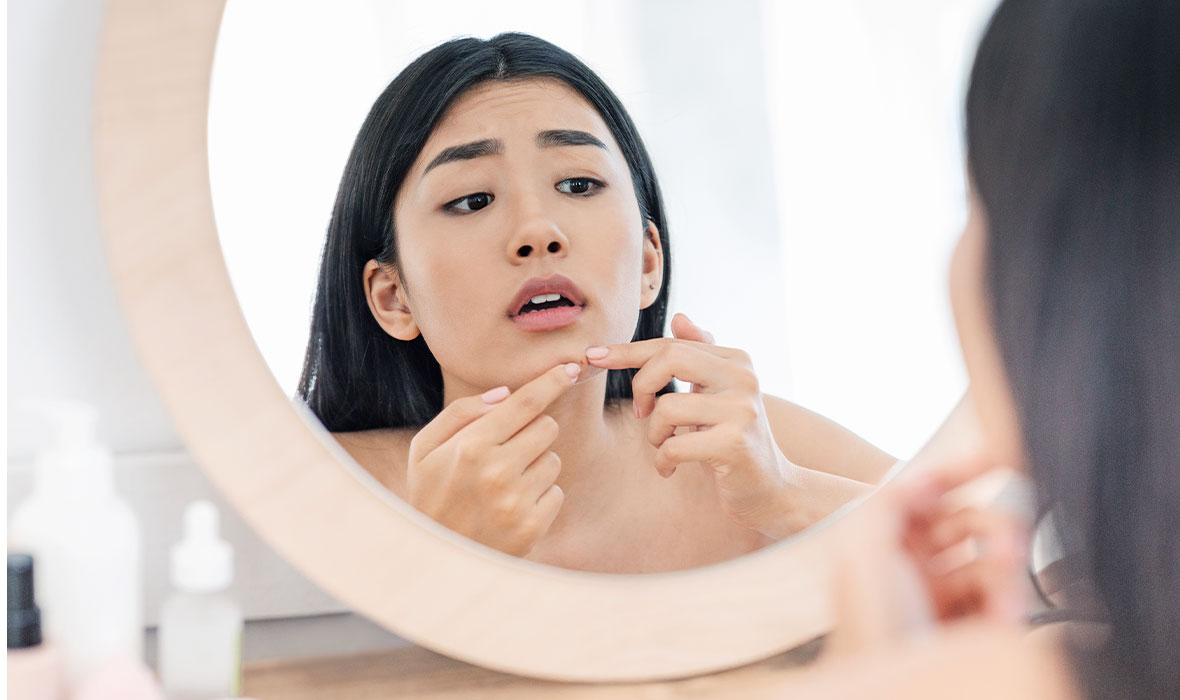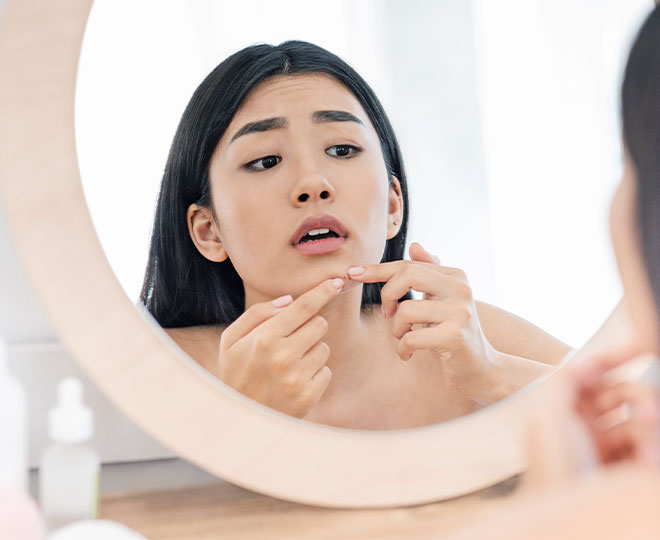Should you pop pimples? It can be so tempting — probably because you might feel like once you pop it, it’s gone! But that’s not usually the case. If you’re wondering how to pop a pimple or questioning, "Is popping pimples bad?", you’re about to arm yourself with information that can save your skin.
Is popping pimples bad? Yes, don’t do it!
Dermatologists strongly advise against popping your pimples because you can make matters much worse.
In fact, there are several risks in popping your own pimples. Here are a few of the things that can result from attacking that zit.
- You can cause permanent acne scarring or post-inflammatory hyperpigmentation if you break the skin barrier
- You may cause an infection and delay your body’s natural healing process
- Bacteria can spread from the pus to other pores and create a serious acne outbreak
- You may end up pushing the gunk in your pimple deeper into your skin, which can further clog your pores, make your pimple more noticeable, and/or trigger deep inflammation
It usually takes about 3-7 days for a pimple to heal without doing anything. Popping it can extend this time to 2 weeks! So even though squeezing that sucker out seems like a quick fix, it actually exacerbates things and lengthens the time it takes to heal.
If you do nothing, your body will naturally burst the hair follicle, which unclogs the pore where the pimple was. But we know waiting is the hardest part, so keep reading for some tips for speeding up the process—without doing extra damage.
But first, you should know that professional aestheticians and dermatologists have the training and tools needed to pop pimples safely and effectively—in case you need help with your main squeeze.
Identifying that pimple you’re trying to pop
Whatever type of acne you’re battling — whether noninflammatory like blackheads and whiteheads or inflamed acne — never try to extract it on your own. This is especially true for inflamed acne, as these types of pimples are deep in your skin and are more likely to get infected and scar if you try to squeeze them. How do you know the difference? Inflamed acne includes:
Papules:
Purple, red, or brown bumps that don’t contain a white headPustules:
Bumps with a yellow or white center of pus, with inflammation around the edgesCysts:
Painful, swollen lumps that are red, purple, or brown and somewhat softNodules:
Swollen, painful lumps deep in the skin that are hard and don’t have a white head
It’s important to look out for signs of inflamed acne as described above so you know when to seek out help from a dermatologist.
Reasons to see a dermatologist
Non-inflamed acne (blackheads and whiteheads) can usually be treated with over-the-counter products with salicylic acid or benzoyl peroxide along with simple hygiene adjustments. But if your breakouts do not go away with non-prescription treatments over time or you have inflamed acne, you may want to see your dermatologist as they can prescribe you a topical or oral medication and help alleviate the pain and pimple with professional extractions, cortisone injections, or a professional chemical peel series. Talk to them about what treatment is right for you.
Helpful ways to leave a pimple alone
Ice:
Holding a piece of ice wrapped in a towel to your inflamed pimple should help reduce swelling, redness, and pain.Warm compress:
Soak a washcloth in warm (not hot!) water and hold it to your pimple – this can help loosen bacteria and the gunk stuck in pores and will also help soothe your skin.Spot treatments:
Proactiv Emergency Blemish Relief contains a powerful double dose of benzoyl peroxide to target acne-causing bacteria inside pores and help clear up pimples.Proactiv skincare systems:
Our 3-step acne-fighting systems are easy-to-use and super effective at treating active acne — and preventing new breakouts.
The bottom line
As tempting as it may be to pop your pimples, don’t. Pimple popping extends the length of time it takes for your pimple to heal and often makes matters worse. There are plenty of at-home treatments that can help target your breakout. When you’re not seeing results after continued use or you’ve got inflammatory, painful cysts or nodules, seek out help from a dermatologist.






